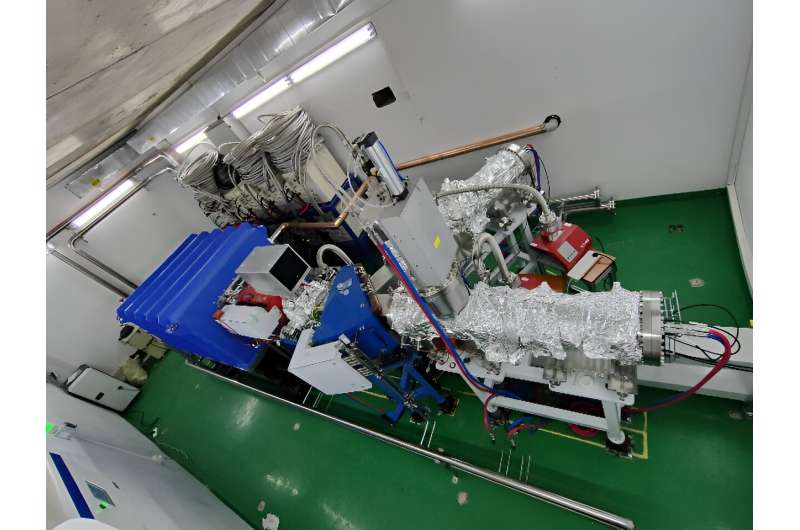This article has been reviewed according to Science X's editorial process and policies. Editors have highlighted the following attributes while ensuring the content's credibility:
fact-checked
trusted source
proofread
First Nb₃Sn superconducting radio-frequency electron accelerator achieves stable acceleration

The world's first Nb3Sn superconducting radio-frequency (SRF) electron accelerator recently achieved stable beam acceleration, reaching a maximum energy of 4.6 MeV with an average macro-pulse beam current exceeding 100 mA.
Cooled directly by cryocoolers in a novel liquid-helium-free (LHe-free) design, the Nb3Sn SRF electron accelerator was developed by researchers from the Institute of Modern Physics (IMP) of the Chinese Academy of Sciences (CAS) and the Advanced Energy Science and Technology Guangdong Laboratory.
SRF accelerators currently rely on resonant cavities made from niobium (Nb) and are cooled via LHe immersion (typically to 2K for electron machines). A major pursuit of SRF scientists is cavity fabrication using new materials with higher transition temperatures than niobium.
Among prospective new materials, the most popular one is Nb3Sn, whose superconducting transition temperature is twice that of metallic niobium. With great potential to boost the performance of next-generation cavities, Nb3Sn SRF technology is in the forefront of SRF research.
Since it started the research on Nb3Sn SRF technology in 2018, IMP has developed a comprehensive production process that overcome challenges from areas including deposition system, growth mechanisms and coating processes of Nb3Sn thin films. The institute completed the construction of the conduction-cooled LHe-free Nb3Sn SRF electron accelerator at the beginning of 2024.
Stable electron beam acceleration in this accelerator is an achievement that demonstrates, for the first time, the feasibility of utilizing Nb3Sn thin film SRF cavities in both large-scale scientific facilities and compact industrial accelerators. This technology can significantly reduce thermal loads and raise the operation temperature of SRF accelerators such that simpler LHe-free cooling schemes become viable.
Apart from reducing the demand for large-scale cryogenic systems and lowering the operation costs of SRF accelerators, this technology will enable miniaturization to promote industrial applications in fields such as wastewater treatment, preservation and sterilization, and medical isotope production.
Provided by Chinese Academy of Sciences




















